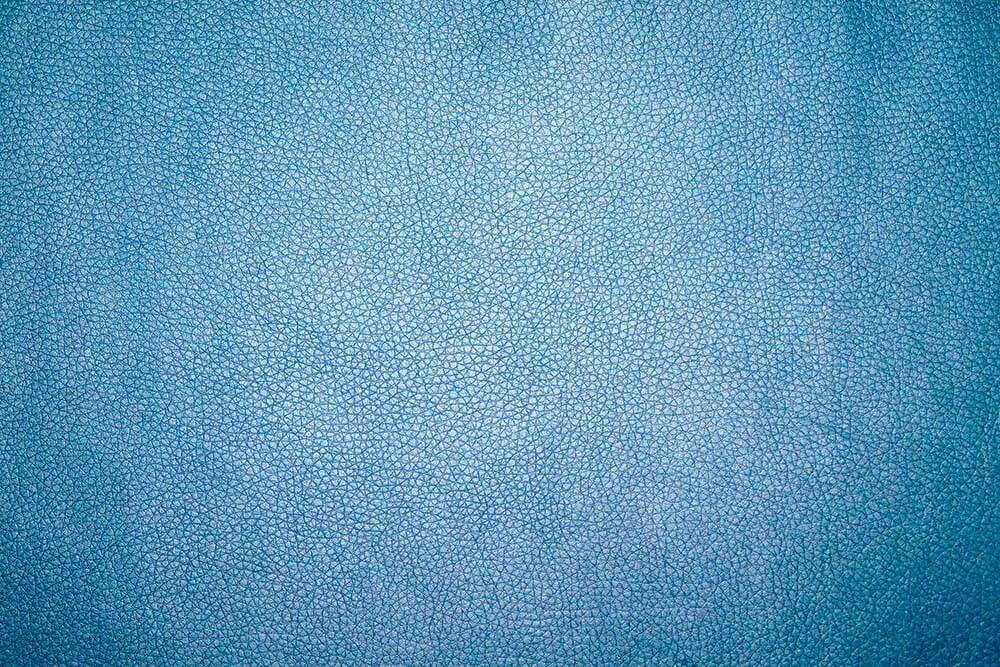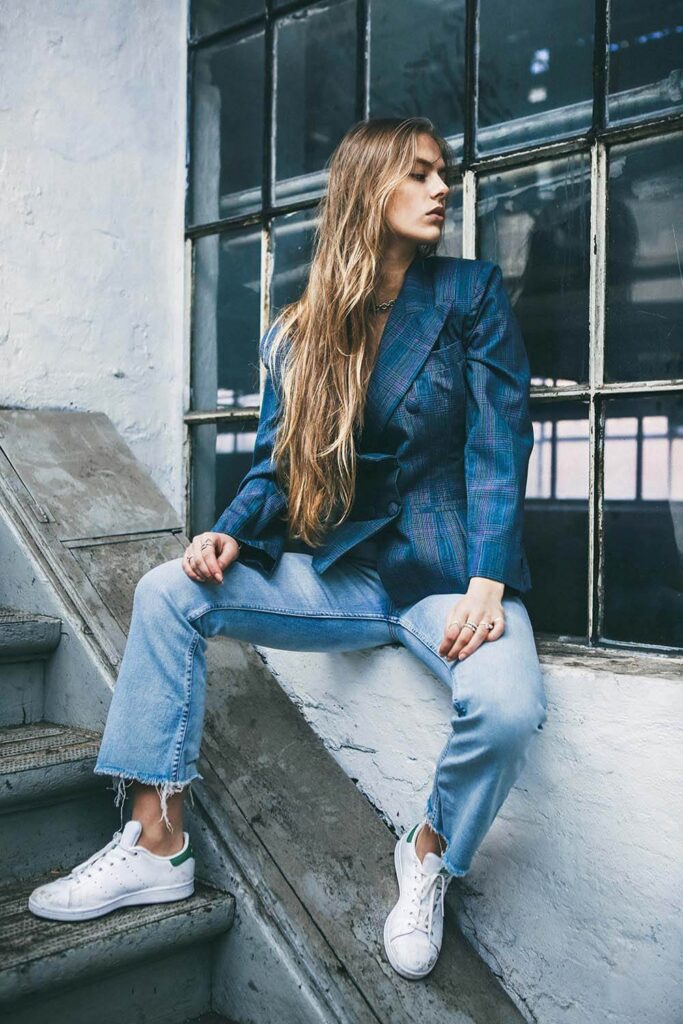Welcome to “The Blue Revolution,” a comprehensive exploration into the rich tapestry of history that surrounds the color blue, especially in the realms of clothing and leather. Blue, a color that has fascinated civilizations since time immemorial, possesses a depth that transcends its visual appeal, embodying cultural, psychological, and aesthetic significance across ages and borders.

From the earliest use of lapis lazuli in ancient artworks to the ubiquitous blue jeans of today, this color’s journey is as varied as it is profound. Its evolution within the fashion industry and its pivotal role in leatherworking showcase not only technological advancements but also shifting societal norms and cultural values.
As we embark on this journey through time, we’ll uncover the origins of blue’s allure, its ascension in the realms of fashion and textiles, and its profound impact on our collective psyche. This exploration will not only enlighten but also inspire appreciation for one of nature’s most enigmatic gifts. Join us as we unravel the story of blue—a color that paints our world in the most beautiful hues.
The Dawn of Blue
The history of blue begins in the most ancient of times, with its first recorded use dating back to the magnificent lapis lazuli mines of Northeast Afghanistan over 6,000 years ago. Civilizations such as the Egyptians held blue in high esteem, associating it with royalty, the divine, and the infinite. The rare and costly lapis lazuli was meticulously ground into powder to create a vibrant pigment, reserved for the most sacred and prestigious applications.

As centuries passed, the quest for blue pigments led to innovations across cultures. The Middle Ages saw the emergence of ultramarine, derived from lapis lazuli, which became the gold standard for blue. Its costliness and radiant beauty adorned the robes of the Virgin Mary in countless artworks, signifying purity and divinity. Meanwhile, in the East, indigo dye, extracted from the indigofera plant, revolutionized textiles, offering a more accessible way to achieve the coveted blue hues in clothing.
Blue in Fashion and Textiles
Blue’s journey into the fabric of society is as rich and varied as the color spectrum itself. Initially a symbol of wealth and power due to the scarcity and cost of blue dyes, it gradually democratized with the advent of synthetic dyes in the 19th century. This transformation allowed blue to permeate everyday life, changing its societal associations.

Blue’s journey into the fabric of society is as rich and varied as the color spectrum itself. Initially a symbol of wealth and power due to the scarcity and cost of blue dyes, it gradually democratized with the advent of synthetic dyes in the 19th century. This transformation allowed blue to permeate everyday life, changing its societal associations.

The industrial revolution brought with it the rise of blue denim, a durable fabric intended for workwear that would eventually become a universal fashion staple. The evolution of denim, from miners’ and cowboys’ rugged attire to a symbol of youth rebellion and then mainstream acceptance, reflects blue’s unique ability to adapt and resonate across different eras and social strata.
Blue in Leatherworking
In the realm of leather, blue has made significant inroads, moving from a rare choice to a sought-after hue in luxury goods and fashion. Traditional techniques of dyeing leather with natural indigo or other blue pigments have given way to modern chemical processes, allowing for a broader spectrum of shades and consistency. Blue leather today graces everything from high-end handbags and shoes to jackets and accessories, symbolizing both innovation and timeless elegance.

The process of dyeing leather blue involves careful preparation and skill, ensuring the color penetrates deeply and evenly while preserving the leather’s natural texture and durability. This intersection of art and technology highlights the ongoing evolution of blue in materials and design, underscoring its enduring appeal.
Artistic and Cultural Representations
Blue’s influence extends far beyond material culture, deeply ingrained in art and symbolism across the world. In art, blue has been used to convey a range of emotions and concepts, from tranquility and depth to sadness and introspection. The use of blue in the works of artists like Vincent van Gogh and Pablo Picasso demonstrates its powerful expressive capabilities, capable of evoking a profound emotional response.


Culturally, blue carries diverse meanings, from peace and serenity in the West to immortality and virtue in China. Its omnipresence in nature—the sky and the sea—has imbued it with a universal significance, making it a color that transcends cultural boundaries, embodying a multitude of meanings and emotions across the globe.
Psychological and Social Aspects
Blue’s impact transcends the physical and aesthetic realms, venturing into the psychological and social dimensions of human experience. It is the world’s most popular color, often associated with calmness, stability, and trustworthiness. This psychological appeal is why blue is a dominant color in branding and corporate identities, suggesting reliability and professionalism.
Moreover, blue’s versatility in fashion and design speaks to its ability to embody both tradition and innovation. It can be both conservative and cutting edge, reflecting societal shifts and trends. The color’s ability to evoke feelings of serenity and authority simultaneously has made it a staple in the psychological toolkit of designers and marketers alike.
Technological Advances and the Future of Blue
The quest for the perfect blue has propelled technological advancements in pigment creation and application. The discovery of Egyptian blue, the first synthetic pigment, marked the beginning of humanity’s fascination with creating vibrant, lasting blues. Fast forward to the 21st century, and we have the innovation of YInMn blue, a pigment discovered accidentally in 2009, offering a bright, non-fading blue that has applications ranging from art to energy efficiency.
In the realm of fashion and textiles, technology has revolutionized the production and dyeing processes, making blue fabrics more accessible, sustainable, and varied than ever before. Innovations in dyeing techniques aim to reduce environmental impact, such as waterless dyeing processes and the use of natural indigo sourced from sustainable plantations.
The future of blue in fashion and materials science looks promising, with ongoing research into eco-friendly dyes and processes that promise to maintain blue’s vibrancy without compromising the planet’s health.
History of Blue Color in Clothing and Leather
Central to our exploration is the profound relationship between blue and its material expressions, particularly in clothing and leather. This history is a testament to blue’s versatility and its capacity to embody values, from the practical to the symbolic. Blue’s journey from a color of power and prestige to a universal favorite mirrors societal changes, reflecting evolving tastes, economies, and cultural dialogues.
In clothing, blue’s narrative is richly illustrated by the iconic status of jeans, which have become an egalitarian fashion statement. In leather, blue has emerged from obscurity to become a sought-after option for luxury goods, symbolizing both innovation and tradition. This evolution is emblematic of blue’s unique place in the cultural fabric, weaving together threads of history, innovation, and collective identity.



FAQs
How did blue become a popular color in fashion?
Blue’s popularity in fashion evolved over centuries, initially due to the rarity and expense of blue dyes, which made it a symbol of status. The advent of synthetic dyes made blue more accessible, leading to its widespread adoption in everyday and high fashion.
Why is blue considered trustworthy?
Blue is often associated with stability, calmness, and reliability. These psychological associations make it a preferred color in branding and corporate identities, aiming to evoke trust and confidence in consumers.
Can blue dye be sustainable?
Yes, advancements in dye technology and a renewed interest in natural dyes like indigo have led to more sustainable blue dyeing processes. Efforts to reduce water usage and eliminate harmful chemicals are making blue dye more environmentally friendly.
What’s the significance of YInMn blue?
YInMn blue is a vibrant, durable pigment discovered accidentally in 2009. Its significance lies in its stability, non-toxicity, and energy efficiency, making it an important advancement in material science and art.
How has the meaning of blue changed over time?
Blue’s meaning has evolved from a symbol of wealth and divinity to a universal favorite representing a range of emotions and qualities, including serenity, depth, and trust. Its ability to adapt to different cultural and societal contexts underscores its enduring appeal.
Conclusion
The history of blue color in clothing and leather is a captivating saga that spans millennia, cultures, and industries. Its journey from the precious lapis lazuli to the creation of synthetic pigments reflects humanity’s enduring fascination with this hue. Blue continues to enchant with its depth and versatility, embodying a spectrum of meanings and emotions. As we look to the future, blue’s legacy in fashion, art, and culture promises to evolve further, mirroring changes in technology, environmental awareness, and social values. The story of blue is far from over; it is a vibrant, ongoing narrative that continues to unfold in surprising and beautiful ways.

Thank you for taking the time to read my blog article. I am grateful for your interest and support. I hope the information I shared was useful and informative. If you have any questions or comments, please feel free to reach out. Your feedback is always welcome.
Sincerely yours,
Mike Giordano

-
Product on saleDark Blue Patent Leather Belt – Square Silver BuckleOriginal price was: $65.00.$52.00Current price is: $52.00.
-
Product on saleDark Blue Patent Leather Belt – Square Gold BuckleOriginal price was: $65.00.$52.00Current price is: $52.00.
-
Product on saleDark Blue Patent Leather Belt – Oval Gold BuckleOriginal price was: $65.00.$52.00Current price is: $52.00.
-
Product on saleDark Blue Patent Leather Belt – Gunmetal Rounded BuckleOriginal price was: $65.00.$52.00Current price is: $52.00.
-
Product on saleDark Blue Patent Leather Belt – Gold Rounded BuckleOriginal price was: $65.00.$52.00Current price is: $52.00.
-
Product on saleBlue Mens Belt Strap Replacement Nubuck LeatherOriginal price was: $55.00.$44.00Current price is: $44.00.
-
Product on saleBlue Mens Belt Strap Weave Texture Genuine LeatherOriginal price was: $55.00.$44.00Current price is: $44.00.
-
Product on saleBlue Nubuck Belt Leather Strap ReplacementOriginal price was: $55.00.$44.00Current price is: $44.00.
-
Product on saleMens Belt Strap Replacement Blue Weave Leather Laser Cut TextureOriginal price was: $55.00.$44.00Current price is: $44.00.









